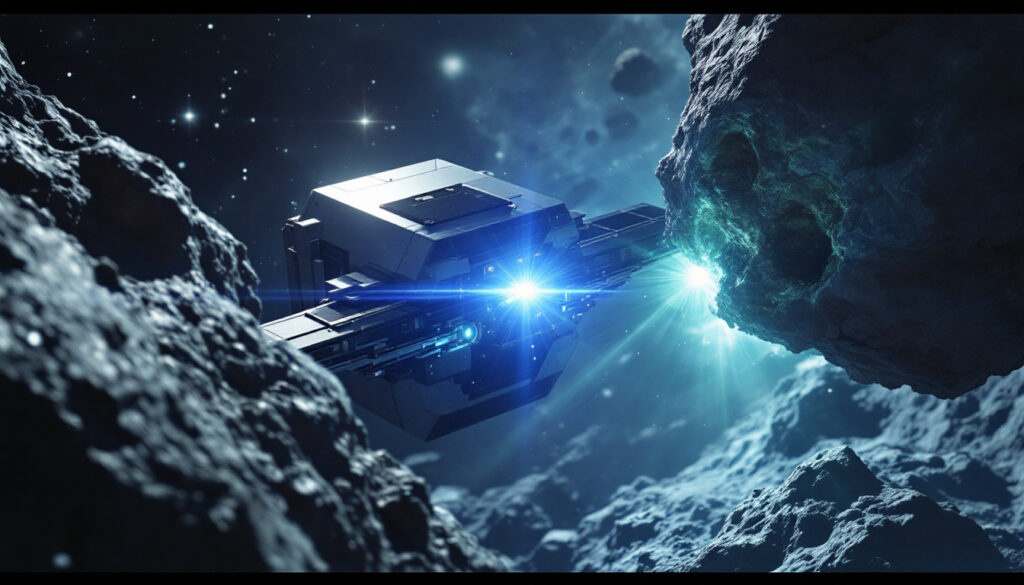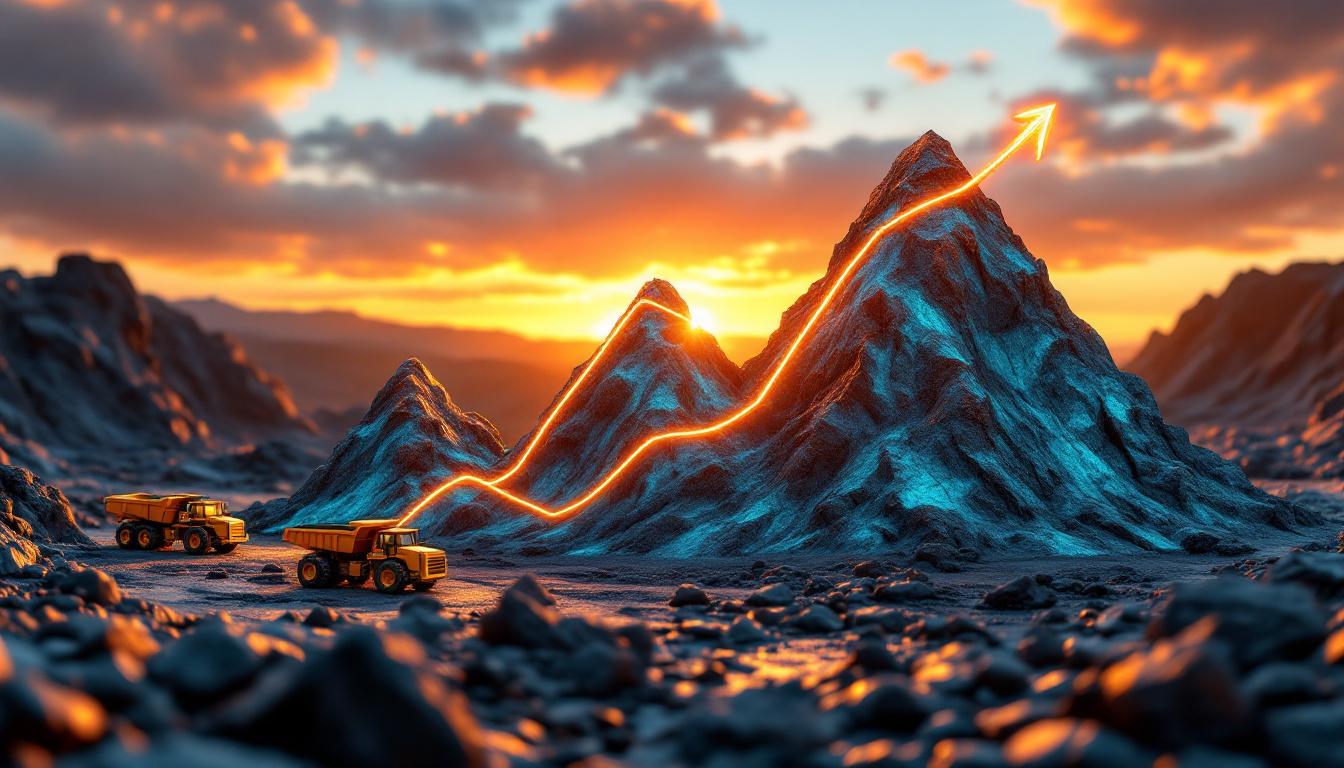What Is Asteroid Mining and Why Does It Matter?
Asteroid mining represents one of the most ambitious frontiers in space exploration, involving the extraction of valuable resources from asteroids orbiting in our solar system. Far from being merely speculative science fiction, this emerging industry is rapidly transitioning into commercial reality through significant technological innovations and entrepreneurial vision.
The resources available in space are remarkably abundant, with virtually everything needed for human survival and industrial development present within these celestial bodies. Dr. Jose Acain, co-founder and CTO of AstroForge, describes space resources as "bountiful," noting that "there's virtually everything we need for survival in space rocks."
Currently, the industry is primarily focused on harvesting Platinum Group Metals (PGMs) for terrestrial use, rather than the original concept of mining in space to support space-based activities. This strategic pivot represents a more commercially viable approach in the short term.
Asteroid mining and space exploration has the potential to complement Earth-based mining operations initially, while potentially causing significant disruption to metal markets in the longer term. Industry experts predict that as technology matures and costs decrease, space-based resource extraction could eventually account for a substantial percentage of certain metals used on Earth.
The transition from theoretical concept to viable industry has been driven by advances in spacecraft miniaturization, autonomous systems, and extraction technologies—all of which have dramatically reduced mission costs to levels that make commercial operations feasible. Additionally, mining's crucial role in the clean energy transition highlights the importance of finding new resource sources beyond our planet.
Who Are the Pioneers Leading Space Mining Ventures?
At the forefront of asteroid mining development stands Jose Acain, co-founder and Chief Technology Officer of AstroForge, who is pioneering practical technologies to make asteroid mining commercially viable.
Acain brings exceptional aerospace credentials to the venture, having served as deputy chief engineer on SpaceX's first Falcon 9 vehicle—the rocket that revolutionized space launch economics. His leadership extended to the first four Dragon spacecraft missions, establishing critical experience in developing vehicles capable of returning to Earth—a crucial capability for bringing space resources back.
"My background in spacecraft development at NASA provided the foundation for designing systems that can operate autonomously millions of kilometers from Earth," Acain explains, highlighting the unique challenges of deep space resource extraction.
What distinguishes AstroForge from previous asteroid mining ventures is its business model. The company has already secured contracts with terrestrial refineries to deliver refined metals at current spot prices, establishing a clear path to revenue generation. This represents a significant shift from previous ventures that focused primarily on long-term, space-based resource utilization.
While earlier asteroid mining companies concentrated on the concept of mining resources in space for space-based applications, AstroForge has targeted the more immediate commercial opportunity of bringing valuable materials back to Earth—a strategy that addresses current market demands while building infrastructure for future space resource utilization. Their approach mirrors the digital transformation in mining innovations happening on Earth, applying similar principles of efficiency and sustainability.
What Materials Are Worth Mining in Space?
Platinum Group Metals (PGMs) have emerged as the primary target for asteroid mining operations due to several compelling factors. These metals—including platinum, palladium, rhodium, ruthenium, iridium, and osmium—present an exceptionally favorable business case, with each mission potentially yielding returns valued at approximately $60-80 million.
"The concentration of PGMs in certain metallic asteroids exceeds the richest terrestrial deposits by factors of 10 to 100," explains mining geologist Dr. Sarah Tompkins. "This concentration, combined with the absence of overburden removal and environmental remediation costs, creates profit margins that simply aren't achievable on Earth."
Metallic asteroids—the primary targets for initial mining operations—contain approximately 90-95% iron, with the remainder consisting of various metals including nickel, cobalt, and the valuable PGMs. The ferromagnetic properties of this iron content prove crucial for spacecraft landing and stabilization techniques.
Contrary to popular speculation, gold has not been found in significant quantities in meteorites (which provide our best analog for asteroid composition), making it a less attractive target for initial mining operations compared to PGMs. Furthermore, the crucial role of platinum in driving green hydrogen makes it an especially valuable resource to extract from space.
Each mining mission aims to return approximately one metric ton of refined material—roughly the size of a mini-refrigerator—with this volume representing an optimal balance between mission cost, technical feasibility, and return value for early operations.
How Do Spacecraft Identify and Land on Asteroids?
The process of asteroid mining begins with sophisticated discovery and characterization missions. AstroForge's approach utilizes a two-phase reconnaissance strategy before actual mining operations commence.
The initial mission involves a high-resolution imaging flyby to identify crater formations, surface characteristics, and composition indicators. These images provide crucial data for selecting optimal landing sites and extraction locations. Advanced spectroscopic analysis during this phase helps determine the presence and concentration of target materials.
"Our second mission involves actually docking with the asteroid to perform detailed spectroscopy, ensuring we're targeting locations with the highest concentration of valuable materials," notes Acain. This step is critical for maximizing return on investment for subsequent extraction missions.
Target asteroids for initial mining operations measure approximately 400 meters in diameter—large enough to contain substantial resources but small enough to manage with current technology. The mining spacecraft themselves are remarkably compact, measuring about one cubic meter (roughly 200 kg), allowing for cost-effective launch and deployment.
The landing technique employs an innovative approach utilizing clamping magnets that leverage the ferromagnetic properties of metallic asteroids. This method eliminates the need for complex anchoring systems required on non-metallic bodies like comets or carbonaceous asteroids.
These missions travel up to 20 million kilometers into deep space—more than 50 times the distance to the Moon (380,000 km)—requiring sophisticated autonomous navigation and operation systems that can function without real-time human intervention. The geological insights shaping mining investments on Earth are being applied to these extraterrestrial ventures, helping companies identify the most promising targets.
What Technologies Make Asteroid Mining Possible?
The technological heart of asteroid mining operations is an all-electric refinery system powered entirely by solar energy and batteries, enabling sustainable operations far from Earth without requiring fuel or external power sources.
The extraction process employs a dual-laser system with specialized functions: "One laser melts the surface material, while the second acts as a 'hammer,' causing the molten material to splash upward where it can be captured," Acain explains. This approach eliminates the need for traditional drilling or excavation equipment that would be impractical in microgravity environments.
Magnetic separation technology plays a crucial role in the refinement process. Since PGMs are non-magnetic while most asteroid material (primarily iron) is ferromagnetic, this property creates a straightforward method for separating valuable materials from bulk composition without chemical processing.
After extraction and preliminary refinement, spacecraft return directly to Earth, re-entering the atmosphere with their valuable cargo. Landing zones are carefully selected in unpopulated areas to minimize any potential risks, with recovery teams dispatched to collect the returned materials.
A key economic breakthrough has been reducing mission costs to less than $10 million each—a fraction of traditional space mission budgets. This cost efficiency creates a viable business model with substantial profit margins.
These operations require specialized licensing from multiple government agencies. The Federal Aviation Administration (FAA) manages launch and re-entry permissions, while the Federal Communications Commission (FCC) handles spectrum management for deep space communication—with AstroForge becoming the first commercial entity to secure a deep space spectrum license.
What Are the Environmental Implications of Space Mining?
Asteroid mining presents a compelling environmental case when compared to terrestrial mining operations. The environmental impact on Earth is minimal, limited primarily to the emissions associated with rocket launches to deploy equipment.
"Traditional terrestrial mining often involves deforestation, habitat destruction, water pollution, and significant carbon emissions," notes environmental scientist Dr. Elena Rodriguez. "Asteroid mining eliminates almost all of these impacts, potentially representing one of the most environmentally sustainable forms of resource extraction."
The primary environmental consideration for returned materials involves potential contamination protocols. All materials brought back from asteroids undergo rigorous decontamination processes, including high-energy laser treatment to eliminate any theoretical biological contamination—though the harsh environment of space makes such contamination extremely unlikely.
NASA's Johnson Space Center maintains specialized decontamination facilities that establish protocols for handling extraterrestrial materials, providing a framework for commercial operations to follow.
As asteroid mining and space exploration scales up, it could significantly reduce the environmental footprint of terrestrial mining operations, particularly for PGMs which currently require extensive processing of low-grade ores with substantial environmental consequences. This aligns with broader efforts toward mining decarbonisation and sustainable practices already underway in the terrestrial mining sector.
What Challenges Does Asteroid Mining Face?
Despite its promising potential, asteroid mining faces several significant challenges. Perhaps most fundamental is the limited data available compared to terrestrial mining operations, where extensive geological surveys and sample analysis precede any extraction activity.
"We're relying heavily on meteorite data and extrapolation from limited asteroid missions," acknowledges Acain. "This creates uncertainty that must be managed through adaptive mission planning and technology."
The requirement for autonomous remote sampling and extraction presents substantial technical hurdles. Mining operations must function for months without human intervention, over communication distances that create significant time delays, necessitating advanced AI systems capable of making real-time decisions.
Regulatory frameworks represent another significant challenge. AstroForge secured the first-ever commercial deep space spectrum license from the FCC, establishing a precedent for future operations. All missions must comply with the Outer Space Treaty of 1967, which prohibits mining resources for military applications and establishes basic principles for space resource utilization.
Perhaps most challenging is industry adoption and financing. "The traditional mining industry is notoriously risk-averse," explains mining investment analyst Richard Chen. "Current mining financing structures don't readily accommodate the innovative approaches and longer timelines required for space resource development."
This reality necessitates new funding mechanisms that accept higher risk profiles while offering potential returns that significantly exceed terrestrial mining investments—a paradigm shift in resource extraction financing.
What's the Future of Space Resource Extraction?
The future of asteroid mining appears increasingly tangible as companies like AstroForge move from concept to implementation. The company has already secured contracts with terrestrial refineries to purchase returned materials, establishing a clear commercial pathway.
These refineries will process asteroid-derived materials from approximately 70% purity (achieved in space) to 99% purity for commercial applications. This integration with existing refining infrastructure creates a seamless transition into current supply chains.
The initial market for space-derived materials includes collectors and investors interested in "first return" pieces—similar to how lunar meteorites command premium prices despite having identical composition to more common meteorites. This high-value niche market provides early revenue while operations scale.
As operations mature, asteroid mining has the potential to scale significantly, potentially taking on a larger portion of Earth's resource needs for specific metals. Market analysts project that within 15-20 years, space-derived PGMs could account for 5-10% of global supply, with proportional increases as technology advances.
"We're witnessing the beginning of a transformation in how humanity acquires resources," remarks space economist Dr. Michael Lee. "While asteroid mining will complement terrestrial mining for decades to come, it represents a fundamental shift in our relationship with extraterrestrial resources."
This emerging industry could ultimately transform global resource acquisition methods while addressing environmental concerns associated with terrestrial mining—a powerful combination of economic opportunity and sustainability. As researchers at Harvard University point out, the economics of space resource utilisation could reshape global markets in the coming decades.
FAQs About Asteroid Mining
How soon could asteroid mining become commercially viable?
Companies like AstroForge are already conducting discovery missions, with extraction missions planned within the next 2-3 years. Commercial viability depends on successful demonstration of end-to-end capabilities, from extraction to Earth return and sales of refined materials.
What makes asteroid mining different from terrestrial mining?
Space mining operates in microgravity environments, requires different extraction techniques, and faces unique logistical challenges including communication delays and autonomous operation. However, it offers access to high-concentration resources without Earth's environmental impacts or territorial restrictions.
Are there legal frameworks for space mining?
Yes, operations must comply with the Outer Space Treaty of 1967 and obtain licenses from agencies like the FAA for launch/re-entry and the FCC for communications. However, specific resource rights remain an evolving area of international space law requiring continued development.
What happens to materials brought back from asteroids?
Returned materials undergo decontamination procedures to eliminate any theoretical biological contamination before being delivered to refineries for final processing. Initial refined products will likely command premium prices as collectors' items before entering standard commodity markets.
Could asteroid mining replace Earth-based mining?
Initially, asteroid mining will complement terrestrial mining, particularly for PGMs and other rare metals. While it may never completely replace Earth-based operations, it offers the potential for reducing environmental impacts of traditional mining and providing resources for both terrestrial and space-based applications over time.
Ready to Discover the Next Major Mining Opportunity?
Stay ahead of the market with real-time alerts on significant ASX mineral discoveries through Discovery Alert's proprietary Discovery IQ model, which transforms complex mineral data into actionable insights. Explore why major mineral discoveries can lead to exceptional returns by visiting Discovery Alert's dedicated discoveries page and begin your 30-day free trial today.




